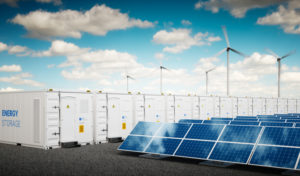A recent report published by the Energy Transition Lab at the University of Minnesota’s Institute of the Environment suggests that a mix of renewable energy and lithium ion storage could be competitive in price with natural gas “peaker” turbines.
The peaker turbines fire up during the times of highest demand on the grid. The electricity they produce is some of the most expensive. The high cost of peaker electricity coupled with the rapidly falling cost of renewables and batteries may combine to make the solar + storage combination less expensive than the natural gas fired peakers.
MIT Technology Review writes of the report:
Minnesota currently gets about 21 percent of its energy from renewables. That’s not bad, but current plans also call for bringing an additional 1,800 megawatts of gas-fired “peaker” plants online by 2028 to meet growing demand. As the moniker suggests, these plants are meant to spin up quickly to meet daily peaks in energy demand—something renewables tend to be bad at because the wind doesn’t always blow and the sun doesn’t always shine.
Storing energy from renewables could solve that problem, but it’s traditionally been thought of as too expensive compared with other forms of energy.
The new report suggests otherwise. According to the analysis, bringing lithium-ion batteries online for grid storage would be a good way to stockpile energy for when it’s needed, and it would prove less costly than building and operating new natural-gas plants.
The finding comes at an interesting time. For one thing, the price of lithium-ion batteries continues to plummet, something that certainly has the auto industry’s attention. And grid-scale batteries, while still relatively rare, are popping up more and more these days. The Minnesota report, then, suggests that such projects may become increasingly common—and could be a powerful way to lower emissions without sending our power bills skyrocketing in the process.
Read more here.

